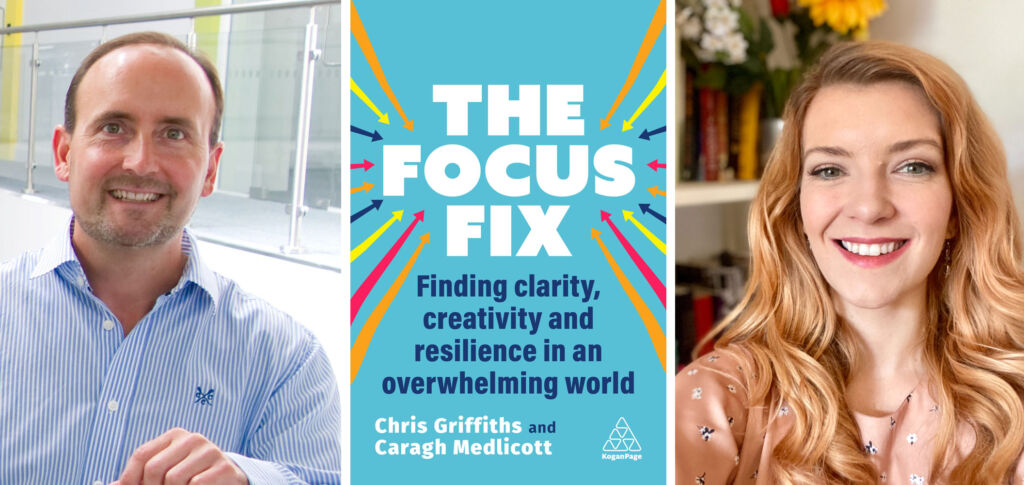
For this guest feature, authors Chris Griffiths and Caragh Medlicott explore the mysterious world of focused daydreaming, a lesser-known problem-solving technique used by leading entrepreneurs.
If you want to see someone go from calm to panicked in a matter of seconds, start a stopwatch and ask them for ten great ideas. Creativity is rarely something we can produce on command, and that’s doubly true when we’re under pressure. No wonder, then, that we’re finding less and less time for innovative thinking, as 41% of us are stressed at work.
In our current working environment, busyness reigns supreme. We deem someone to be a hard worker on the basis of how stressed they seem to be, rather than looking at the actual quality of the work they produce. Yet, if we want to be successful, we need to be able to operate at our cognitive best. Achieving this can be intimidating, but luckily for you there’s a little-known technique that can help you kickstart your brain and find happiness at work too.

What is Focused Daydreaming?
So, what is the magical technique, you ask? Well, it’s something we like to call “focused daydreaming,” it’s all about bringing structure to a cognitive tool that is naturally beneficial to us. Let me ask you to think, for a moment, about where you get your best ideas.
While everyone’s answers will vary somewhat, very few say that their most creative moments hit in classically “focused” environments. Frustrating as it may be, we’re much more likely to experience a strike of inspiration when doing something random—whether that be driving, walking, or showering.
The correlative factor between these seemingly unrelated activities and the light bulb moments that they bring about is, in fact, daydreaming. When you begin to understand the full power of this tool, you won’t be surprised to hear how it’s been actively applied by some of the most successful entrepreneurs and business leaders in the world as a technique for brainstorming and problem-solving:
Microsoft co-founder Bill Gates reportedly takes a week off twice a year just for reflection and reading. He calls them ‘Think Weeks’, and they emphasise the value of abandoning daily routines to encourage free thought and creativity.
Sir Richard Branson of Virgin often speaks about the importance of switching off and daydreaming to fuel creativity – “I always keep a notebook in my pocket,” implying that his daydreaming often leads to ideas worth jotting down. He also states that you should ‘open your calendar and schedule time just to dream’.
The Evidence Behind the Technique
While this evidence is mostly anecdotal, it is also substantiated by neuroscience. Researchers from the University of British Columbia used brain imaging technology to see what’s actually going on in our brains during mind-wandering sessions. They were surprised to find that daydreaming involves both the ‘default network’ in your brain (the part used for simple/routine tasks) and the ‘executive network’ (responsible for more complex activities).

They concluded that this explained why mind wandering can be linked to improved performance in areas such as problem-solving and creativity. Far from time-wasting, it seems that mind wandering actually connects sections of our brain that are usually working separately, allowing new ideas to form and novel solutions to crop up.
Focused daydreaming provides a natural remedy to the toxic work culture that prioritises busyness over real strategy. You can harness the power of this yourself by making time for mind-wandering breaks throughout your day at work. Indeed, research from Microsoft has shown that work without breaks causes stress to build up in the brain, while other studies have indicated that regular breaks actually improve productivity.
Combining regular breaks with mind-wandering feels like the perfect opportunity to kill two birds with one stone – giving your focused mind some respite while facilitating the state that naturally fuels your creativity.
To summarise, the focused daydreaming technique can be boiled down to three steps:
- Find your focus. Make your daydream session productive by having a focus in mind. That focus could be brainstorming ideas for a work project or unpicking a problem you’re currently facing—in either case, know your end goal.
- Information for inspiration. With this focus in mind, take time to get to know this topic or subject. This will give your imagination colours to paint with, providing inspiration fodder for the daydreaming mind.
- Activate the daydream state. Now, get into the mind-wandering state – that might be by taking a walk, doing some doodling, or even working through your chores. Any activity that naturally causes your mind to wander off. Just make sure to note down any ideas or breakthroughs that strike you during this period!
By making time to apply this technique daily, you’ll be able to harness the power of focused daydreaming to make the most of your brain—and protect yourself from burnout and stress in the process!
Chris Griffiths and Caragh Medlicott are the authors of The Focus Fix: Finding Clarity, creativity and Resilience in an Overwhelming World (published by Kogan Page).

[L/R] Chris Griffiths and Caragh Medlicott.![]()




You must be logged in to post a comment.